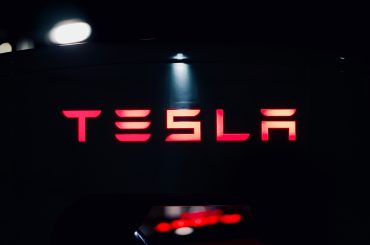Static cars hold a significant place in the automotive world, captivating enthusiasts and showcasing the rich history and advancements of automobile design. These immobile vehicles play a crucial role in various static car displays, including exhibitions, museums, and showcases. By bringing together an impressive range of cars in a stationary setting, static car displays offer a unique opportunity for visitors to appreciate the intricate details and evolution of automotive engineering while providing a platform for cultural preservation and educational experiences. Let’s delve into the world of static cars and explore the diverse avenues where they are prominently featured.
Contents
The Role of Static Cars in Exhibitions
Static car displays are vital in automotive exhibitions, providing a captivating experience for enthusiasts and visitors alike. These displays offer a platform to showcase a wide range of vehicles, from classic models to cutting-edge prototypes, allowing attendees to immerse themselves in the automotive design and innovation world.

By presenting cars in a static state, exhibitions allow enthusiasts to appreciate each vehicle’s intricate details, aesthetics and features up close. Visitors can examine the fine craftsmanship, unique styling cues, and technological advancements that make each car distinct. The stationary nature of the display enables a comprehensive examination of the vehicle’s design, from the exterior bodywork to the interior cabin, without the distractions of movement.
Walking around static cars in an exhibition creates an interactive and engaging experience. Enthusiasts can explore the displays at their own pace, examining the vehicles from different angles and appreciating the subtle nuances that make each car special. The interactive nature of exhibitions often allows visitors to open doors, sit inside the vehicles, and experience the ergonomics and comfort of the driver’s seat. This level of interaction fosters a deeper connection between the enthusiasts and the cars they admire.
Moreover, static car displays provide a platform for manufacturers and designers to showcase their latest innovations, concepts, and technological advancements. Exhibitions often serve as a stage for unveiling new models and prototypes, generating excitement and anticipation within the automotive community. Visitors can witness the evolution of automotive engineering and gain insights into the future of transportation.
Showcasing Automotive History in Museums
Museums play a crucial role in preserving and showcasing the rich history of automobiles, allowing visitors to delve into the captivating world of automotive heritage. These institutions are dedicated to curating collections of static cars that represent different eras, automotive milestones, and the evolution of automotive design.
Museums serve as custodians of automotive history, safeguarding significant vehicles for future generations. By carefully selecting and preserving static cars, museums ensure that important automotive artifacts are protected and accessible to the public. These vehicles are tangible reminders of the technological advancements, design trends, and cultural influences shaping the automotive industry.
Curators of automotive museums put meticulous thought into curating collections representing diverse eras and milestones. They select vehicles that exemplify significant moments in automotive history, such as iconic models, groundbreaking innovations, and significant race cars. By showcasing a variety of cars, museums create a narrative highlighting the progression and impact of automotive design and engineering over time.
Museum displays offer an educational experience, allowing visitors to learn about the cultural, societal, and technological contexts in which these cars were created. Informative displays, signage, and interactive exhibits provide visitors with insights into the historical significance, technical aspects, and design philosophies behind each vehicle. The educational aspect of museum displays sparks curiosity and fosters a deeper understanding of the automotive industry’s evolution.
Furthermore, museums play a crucial role in cultural preservation. They celebrate the heritage and craftsmanship of automobile manufacturers, paying homage to the contributions of designers, engineers, and visionaries who have shaped the industry. By displaying static cars, museums create a shared cultural experience, connecting visitors with the automotive legacy and generating a sense of pride and appreciation for this significant aspect of human achievement.
Curating Static Car Exhibits
Curating static car exhibits involves a meticulous process that begins with selecting vehicles and extends to the thoughtful arrangement of displays. Curators carefully consider various factors to create engaging and informative exhibits representing different styles, eras, and cultural significance.
The process of curating begins with selecting cars that will be featured in the exhibit. Curators consider the exhibition’s theme or focus, aiming to create a cohesive narrative or showcase a specific aspect of automotive history. They consider the significance of each vehicle, looking for models that have made notable contributions to design, technology, or cultural impact.
Curators often aim for diversity in choosing cars to represent different eras, styles, and cultural influences. They select vehicles that exemplify their respective time periods’ design trends and engineering achievements. By showcasing a range of cars, curators provide visitors with a comprehensive overview of the evolution of automotive design and its cultural context.
Curators carefully arrange the cars within the exhibit space once the cars are selected. The placement of vehicles is strategic, allowing visitors to navigate the displays seamlessly and providing visual interest. Consideration is given to factors such as car size, visual flow, and the creation of thematic clusters or chronological sequences.
To enhance the exhibit experience, signage, information panels, and interactive elements play a vital role. Signage gives visitors essential details about each car, including its make, model, year, and notable features. Information panels offer deeper insights into the vehicles’ historical context, technological innovations, and cultural significance. These elements enrich the visitor’s understanding and appreciation of the displayed cars.
Interactive elements, such as touch screens, virtual reality experiences, or multimedia presentations, further engage visitors. These interactive features allow individuals to delve deeper into specific aspects of automotive history or explore additional content related to the vehicles. Interactive elements provide a hands-on and immersive experience, making the exhibit more engaging and memorable.
The Evolution of Static Car Displays
Static car displays have evolved remarkably, adapting to technological advancements and embracing innovative approaches to create engaging visitor experiences. Tracing their history reveals the transformative journey of how static car displays have evolved.
In the early days, static car displays primarily consisted of parked cars in designated areas, allowing visitors to walk around and admire them. These displays aimed to showcase the design and craftsmanship of the vehicles, but the level of interactivity was limited.

Technological advancements have played a significant role in enhancing the exhibit experience. The introduction of virtual reality (VR) technology has revolutionized static car displays, allowing visitors to explore virtual environments and interact with virtual representations of cars. VR allows users to experience the interior of a vehicle, take simulated test drives, and visualize the evolution of automotive design in an immersive and interactive manner.
Interactive displays have also contributed to the evolution of static car exhibits. Touch screens and interactive panels allow visitors to access additional information, videos, and interactive content related to the cars on display. These interactive elements enable a deeper level of engagement and allow visitors to customize their experience based on their interests.
Innovative approaches have transformed static car displays into immersive experiences. Themed exhibits have gained popularity, where cars are curated and arranged around a particular theme or concept, such as classic muscle cars, futuristic prototypes, or iconic movie cars. Themed exhibits create a cohesive and visually captivating display, allowing visitors to explore a specific aspect of automotive history or design.
Immersive installations have also become a prominent feature of static car displays. These installations incorporate audiovisual elements, lighting effects, and interactive storytelling techniques to create a multi-sensory experience. Visitors are transported into a carefully crafted environment that evokes the essence of the cars being showcased, heightening their emotional connection to the exhibits.
Engaging Enthusiasts and the General Public
Static car displays appeal to automotive enthusiasts and the general public, offering a unique platform for learning, engagement, and community building.
For automotive enthusiasts, static car displays provide a haven to indulge their passion for automobiles. These displays allow enthusiasts to immerse themselves in the world of automotive design, appreciate the details, and witness the evolution of vehicles up close. The static nature of the exhibits enables enthusiasts to meticulously examine each car, fueling their curiosity and admiration for automotive craftsmanship.
Moreover, static car displays allow enthusiasts to expand their knowledge and deepen their understanding of automotive history, technological advancements, and design trends. Informative displays, signage, and interactive elements offer insights into the cars on exhibit, providing enthusiasts with a comprehensive learning experience. This enriching environment encourages enthusiasts to broaden their automotive expertise and engage in meaningful discussions about their shared passion.
Static car displays also extend beyond enthusiasts, captivating the general public’s interest. For many, these exhibits offer a glimpse into a world they may not be fully familiar with. The vehicles’ visual appeal, historical significance, and technological innovations on display captivate the imaginations of visitors who may not have previously considered themselves automotive enthusiasts.
Static car displays serve as educational platforms, allowing visitors to learn about automotive history, cultural impact, and engineering achievements. They provide a valuable opportunity for the general public to gain insights into the evolution of transportation, the societal influence of automobiles, and the ongoing advancements in automotive technology.
Furthermore, static car events and exhibitions foster a sense of community among enthusiasts. These gatherings provide a social environment where like-minded individuals can come together, share their knowledge, and converse about their passion. Static car events often include opportunities for enthusiasts to meet industry experts, participate in seminars or workshops, and even showcase their vehicles. This social aspect strengthens the bonds within the automotive community and encourages the exchange of knowledge and experiences.
Future Trends and Innovations
Static car displays are poised to embrace emerging trends and innovations, shaping the future of the automotive exhibition landscape. Several key areas are expected to drive the evolution of static car displays in the coming years.
1. Incorporating Electric and Autonomous Vehicles:
As the automotive industry continues its shift towards sustainability and autonomous technologies, static car displays will increasingly feature electric and autonomous vehicles. Exhibitions will showcase the latest advancements in electric vehicle (EV) technology, highlighting the environmental benefits and showcasing the design and features of EV models. Autonomous vehicles will also take center stage, allowing visitors to explore the future of transportation and experience the potential of self-driving technology.
2. Enhancing the Exhibit Experience with Digital Technologies:
Digital technologies have the potential to revolutionize static car displays, offering immersive and interactive experiences. Virtual reality (VR), augmented reality (AR), and mixed reality (MR) will become integral components of exhibits, allowing visitors to explore cars virtually, experience simulated test drives, and visualize design concepts. Interactive touch screens, mobile apps, and digital information panels will provide visitors with on-demand access to in-depth information, historical context, and multimedia content related to the displayed cars, enriching the exhibit experience.
3. Sustainability and Eco-Friendly Practices:
Static car displays will increasingly emphasize sustainability and eco-friendly practices. Exhibitions and museums will focus on showcasing environmentally conscious vehicles, highlighting the importance of reducing carbon emissions and promoting sustainable transportation solutions. Additionally, venues will adopt sustainable practices, such as incorporating renewable energy sources for power, implementing recycling initiatives, and promoting eco-friendly materials in exhibit design and construction. The goal is to create a sustainable and environmentally responsible experience for visitors.
4. Themed Exhibits and Immersive Installations:
To create unique and captivating experiences, future static car displays will explore innovative approaches such as themed exhibits and immersive installations. Themed exhibits will delve deeper into specific automotive eras, design movements, or cultural influences, offering visitors a curated and immersive journey. Immersive installations will leverage technology, lighting, sound, and visual effects to create multi-sensory experiences that transport visitors into captivating automotive environments, enhancing emotional connections and creating lasting memories.
Conclusion
Static car displays hold immense significance in exhibitions, museums, and showcases. These displays play a vital role in preserving automotive history, engaging enthusiasts, and providing a captivating experience for visitors.
Static car displays serve as invaluable platforms for preserving and showcasing the rich heritage of automobiles. Exhibitions and museums curate collections representing different eras, milestones, and cultural influences, allowing visitors to appreciate the evolution of automotive design and technology. By carefully selecting and preserving static cars, these displays ensure that automotive artifacts are protected and accessible for future generations.
The appeal of static car displays extends beyond enthusiasts, captivating the general public’s interest. These exhibits offer educational opportunities, allowing visitors to learn about automotive history, technological advancements, and design trends. The interactive and immersive elements within static car displays enrich the visitor experience, sparking curiosity and fostering a deeper understanding of the automotive industry.
Static car exhibits continue to evolve, embracing emerging trends and innovations. Incorporating electric and autonomous vehicles, leveraging digital technologies, and promoting sustainability are shaping the future of these displays. Themed exhibits and immersive installations enhance engagement, providing personalized and memorable experiences for visitors.

Looking ahead, the field of static car exhibits holds immense potential for future innovations. Advancements in technology, creative approaches to display design, and a focus on sustainability will drive the evolution of these exhibits. The future promises even more captivating and interactive experiences, expanding the horizons of automotive enthusiasts and creating lasting connections between visitors and automotive history.
Gas Door won’t open? Here’s a troubleshooting guide in 2023





